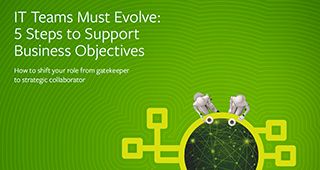IT is a rapidly changing industry, and as support structures change the way we communicate, support issues with clients needs to change. In support centers, today’s end-user calls in and lets us know there is a problem within the product. The end-user spends time explaining what the issue is and either receives a resolution or gets the ticket escalated.
From here, we run into multiple scenarios that can cause the end-user to feel like they aren’t getting needed attention. If the end-user calls back for a status update, the end-user will more than likely speak with another customer representative. The new agent spends time reading through the notes, potentially disagrees with the previous tech on the issue, and gives the user a different story escalating down a different path. You may now have two separate escalation teams working on the same problem and not communicating with each other about what they found.
In many instances, the end-user will call a support center multiple times until they get an experienced technician. When new employees, not understanding the nuances of the product or individual client relationships, give the end-user an answer that is not consistent with prior experiences, it can lead to client confusion. In this scenario, a patient, calm end-user may call multiple times to find an experienced tech or ask to transfer. Resolution times slow down, potentially creating extra calls that could have been resolved with one agent at the helm, from start to finish.
So, how do you increase productivity internally, decrease the noise from redundant tickets, and improve end-user satisfaction? A single point of contact for support.
Why a single point of contact is necessary
Inadequate support personnel in a B2B support center can potentially damage client relationships. For example, a customer service representative handling a follow-up call will need to create more work to smooth over the issues that the client faced. Working to ensure a consistent support experience from initial call to resolution decreases these incident types allowing account reps to focus on the client, further growing the relationship.
Even in a B2C environment, a single point of contact helps alleviate customer frustration, leading to increased customer satisfaction. Customers’ impressions of a company can be tarnished if the support staff lack the ability to communicate effectively. When customers are frustrated, trained support staff needs to be able to handle the frustrations, then turn them around into a positive experience.
A single point of contact can eliminate these issues. In each step of the support process, a single point of contact can continue to nurture the relationship during problems instead of struggling to maintain the status quo. This contact can be beneficial for the support team as well.
How the support team benefits
The support team benefits from having a single point of contact dealing with customers. In B2B organizations or within a support center utilizing intelligent swarming, this works even better. The single point of contact needs to be someone who has the technical knowledge to explain the updates to the client, translate the clients’ issue to the techs, and will need to be trained to nurture the client relationship while proactively communicating.
Imagine we have a call center using intelligent swarming. Intelligent swarming is when the person who takes the first call or initiates the first contact takes the trouble ticket from start to finish, grabbing resources as needed to resolve the issue. Technicians become more skilled over time, leading to faster resolutions as intelligent swarming continues.
When complex issues require days instead of minutes to resolve, the technician should step in, serving as the point of contact for the customer. The benefit here is that now the person who made the initial contact can work the customer’s issues to resolution, giving them clearer focus throughout the day. This process means the point person can also focus on forwarding communication, making sure to nurture the client relationship with active engagement.
The point person can work within the organization to manage internally escalated issues making sure the problem is receiving proper attention and not aging. Where client SLAs are involved or in situations where you have a B2B client that requires more attention during a launch window, an internal customer advocate who communicates directly with the clients would be beneficial.
How the client benefits
A big client complaint is that they get someone different every time they call in and have to explain the entire issue over and over. Another is that they don’t get consistent information from tech to tech. How do you alleviate this within your organization? You create a single point of contact, acting as a customer advocate.
The client feels secure, knowing that their problem is being resolved quickly. If the client needs further assistance, they reach out to the contact who can give them a status update. Information never gets lost in translation as one representative tries to understand the notes of another one. The connection can also reach out with proactive communication nurturing the client relationship by showing genuine concern.
This support contact over time will become an essential partner in the daily workings of these relationships. Agents will be available for quick questions that may not be in a client-facing knowledge base while also becoming active participants keeping the knowledge base updated regularly.
With these changes, clients will feel their trouble tickets are worked quickly to resolution. They will have a person they know helping them with a simple call instead of being on hold all day relaying the same story to multiple people looking for resolution. In this way, call queues are freed up for more severe issues that may arise.
There are many scenarios where a point person working as a customer advocate can help relieve bottlenecks for both clients and companies. These people stand to be the bridge that increases customer satisfaction while decreasing time to resolution for support desks.






